INTRODUCING: The glacial glory of the Glashütte Original Sixties blue Annual Edition for 2020
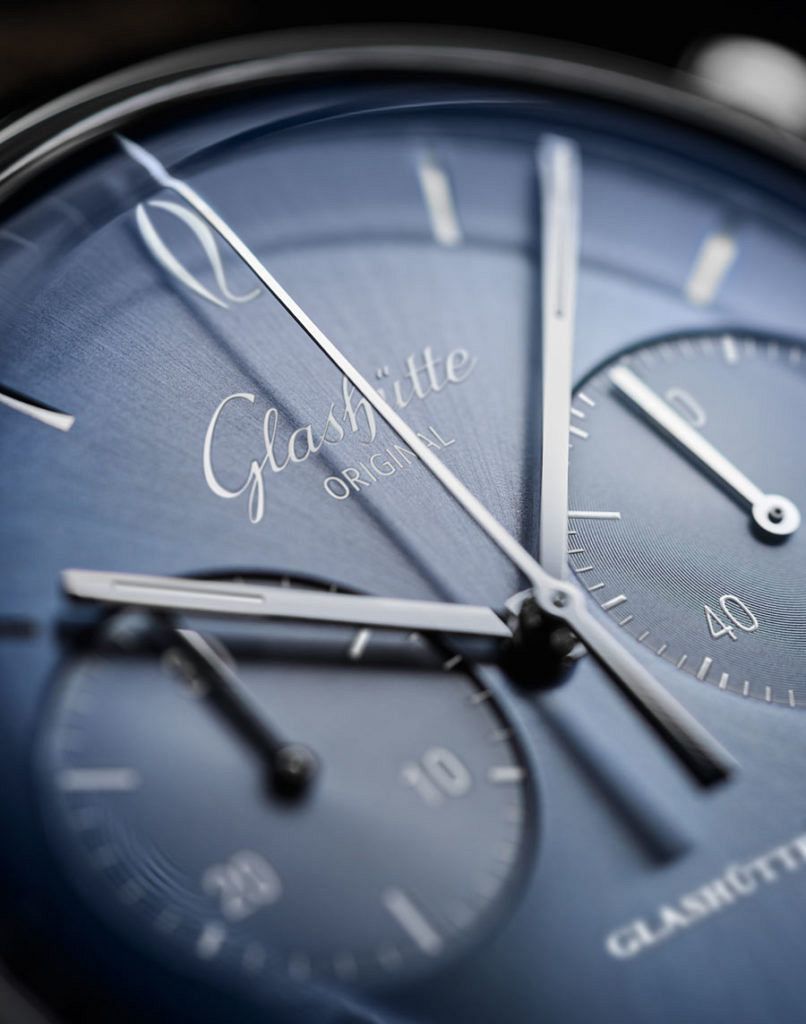 Bold colours and textures. That’s how you could quickly sum up the Sixties collection that has been the vintage-inspired darling of the Glashütte Original lineup ever since they hit the scene. This year, the German-based manufacture has turned the volume down, opting for a much cooler and more restrained expression of the collection with glacier blue dials for the first time ever. Available in both time-only and chronograph formats, this could be a compelling collection for those who love the vintage cues of the Sixties collection but prefer to keep what is on their wrist under the radar a little more. As with all of the references within the Sixties collection, we are offered a watch of restrained dimensions and faithfully executed design cues. The 39mm case of the three-handed watch keeps it at an extremely wearable size, with the chronograph only slightly larger at 42mm. Both keep a low profile, at a tastefully svelte 9.4mm and 12.4mm respectively for the time-only and chronograph. The shape of the case is also a point of note, as it is generously domed on both sides of the watch thanks to the curved sapphire crystal that covers the dial and movement. This serves…
Bold colours and textures. That’s how you could quickly sum up the Sixties collection that has been the vintage-inspired darling of the Glashütte Original lineup ever since they hit the scene. This year, the German-based manufacture has turned the volume down, opting for a much cooler and more restrained expression of the collection with glacier blue dials for the first time ever. Available in both time-only and chronograph formats, this could be a compelling collection for those who love the vintage cues of the Sixties collection but prefer to keep what is on their wrist under the radar a little more. As with all of the references within the Sixties collection, we are offered a watch of restrained dimensions and faithfully executed design cues. The 39mm case of the three-handed watch keeps it at an extremely wearable size, with the chronograph only slightly larger at 42mm. Both keep a low profile, at a tastefully svelte 9.4mm and 12.4mm respectively for the time-only and chronograph. The shape of the case is also a point of note, as it is generously domed on both sides of the watch thanks to the curved sapphire crystal that covers the dial and movement. This serves…
The post INTRODUCING: The glacial glory of the Glashütte Original Sixties blue Annual Edition for 2020 appeared first on Time and Tide Watches.
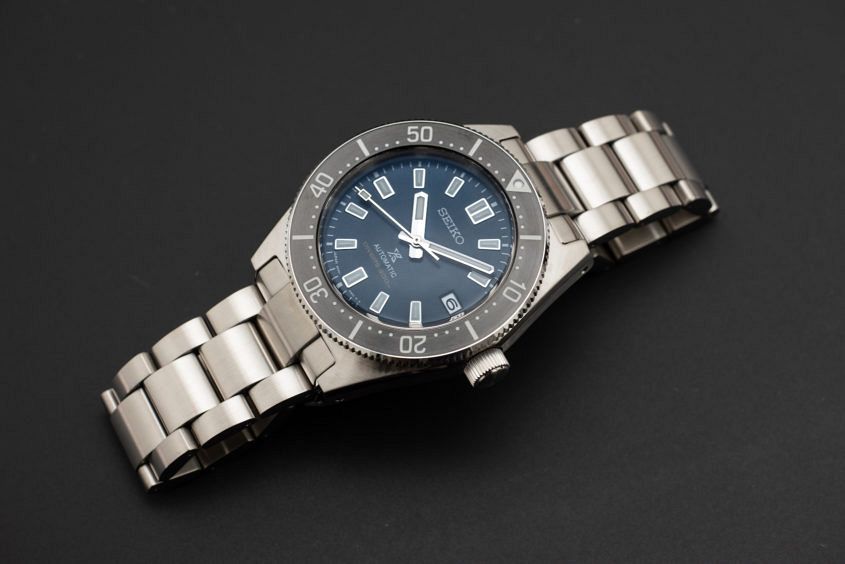 Dive watches have come a very long way in 55 years. It was 1965 when Seiko first dipped their toe into the waters of serious dive watches when they released the Seiko automatic 6217 62MAS, water resistant to 150m. Featuring large luminous hands and hour markers, a rotating dive 60-minute bezel and a rubber strap, it already had all the ingredients of the modern-day dive watch. To pay tribute to this special watch, and the legacy of diving watches that it gave birth to, Seiko have released a collection of limited edition watches inspired by important historic references, three of which are faithful to the originals, and one, the Seiko SPB149J, is a modern interpretation of the 62MAS from 1965. As it is a modern interpretation, it is worth some closer scrutiny to see how it stacks up. The link to the original Seiko dive watch is immediately obvious, with the blocky case sides, squared-off lugs and prominent crown at 3 o’clock. While the crown was originally placed there, by 1968 Seiko had shifted the crown to the 4 o’clock position that we are used to seeing to this day. The black 60-minute bezel is also consistent with the original…
Dive watches have come a very long way in 55 years. It was 1965 when Seiko first dipped their toe into the waters of serious dive watches when they released the Seiko automatic 6217 62MAS, water resistant to 150m. Featuring large luminous hands and hour markers, a rotating dive 60-minute bezel and a rubber strap, it already had all the ingredients of the modern-day dive watch. To pay tribute to this special watch, and the legacy of diving watches that it gave birth to, Seiko have released a collection of limited edition watches inspired by important historic references, three of which are faithful to the originals, and one, the Seiko SPB149J, is a modern interpretation of the 62MAS from 1965. As it is a modern interpretation, it is worth some closer scrutiny to see how it stacks up. The link to the original Seiko dive watch is immediately obvious, with the blocky case sides, squared-off lugs and prominent crown at 3 o’clock. While the crown was originally placed there, by 1968 Seiko had shifted the crown to the 4 o’clock position that we are used to seeing to this day. The black 60-minute bezel is also consistent with the original…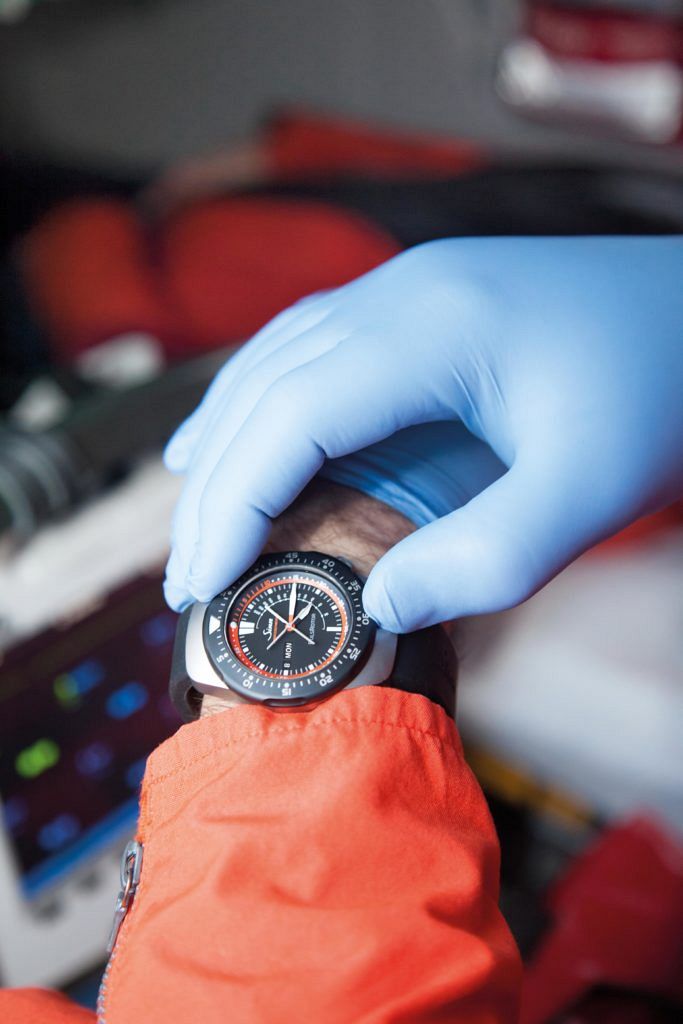 Editor’s note: When this landed in our inbox with imagery of surgical scrubs, a soapy petri dish and a headline along the lines of ‘finally, a super-hygienic watch for medical personnel’, we recoiled. It seemed opportunistic, given the obsession the world currently has with personal — and professional — hygiene. So I called a few friends who work at a hospital. An orderly, a doctor, a surgeon. I asked them what they thought. They all wanted to know more. What makes the watch less prone to contamination? I realised quickly that this was a review worth sharing. There was no sense from them that it was a marketing stunt from Sinn, especially considering the many and material ways that it will appeal to the sanitary conscious. German powerhouse Sinn have a surprisingly recent history of making watches for those who need them. Founded in 1961, an absolute baby in horological terms, their tool-oriented high-contrast watches for pilots and divers have gained a significant following and, like some other well-known German brands, they have managed to eke out a place of their own at the top among the Swiss. Now, with more focus than ever on the medical professionals who are saving lives…
Editor’s note: When this landed in our inbox with imagery of surgical scrubs, a soapy petri dish and a headline along the lines of ‘finally, a super-hygienic watch for medical personnel’, we recoiled. It seemed opportunistic, given the obsession the world currently has with personal — and professional — hygiene. So I called a few friends who work at a hospital. An orderly, a doctor, a surgeon. I asked them what they thought. They all wanted to know more. What makes the watch less prone to contamination? I realised quickly that this was a review worth sharing. There was no sense from them that it was a marketing stunt from Sinn, especially considering the many and material ways that it will appeal to the sanitary conscious. German powerhouse Sinn have a surprisingly recent history of making watches for those who need them. Founded in 1961, an absolute baby in horological terms, their tool-oriented high-contrast watches for pilots and divers have gained a significant following and, like some other well-known German brands, they have managed to eke out a place of their own at the top among the Swiss. Now, with more focus than ever on the medical professionals who are saving lives…
 DOXA’s revival is something easily missed if you’re not paying close attention. Vintage-inspired or re-issued dive watches aren’t exactly selling for double the retail price due to lack of supply, but this DOXA SUB 200 isn’t just another trendy microbrand with an aesthetic and a good marketing team. When determining the legacy of a watchmaker, the first place to look is their innovations. With DOXA, you don’t need to look far. For instance, the first unidirectional diving bezel in 1957, already a home run for the brand without taking into account their collaboration with Rolex in developing the first ever helium escape valve in a wristwatch. Quality, pedigree and affordability seem to be the key themes for DOXA still to this day. At Baselword 2019, the DOXA SUB 200 was released as a modern interpretation of the DOXA of old, trading its dive-professional focus (features of which are still available on other models) for a modern crowd who crave to feel as adventurous as Jacques Cousteau. The dial Though DOXA’s vintage flair is anything but subtle, the dial comes across as strikingly modern in comparison to its 1950s counterparts. The applied indices are restrained and clean, while the matching-width hands…
DOXA’s revival is something easily missed if you’re not paying close attention. Vintage-inspired or re-issued dive watches aren’t exactly selling for double the retail price due to lack of supply, but this DOXA SUB 200 isn’t just another trendy microbrand with an aesthetic and a good marketing team. When determining the legacy of a watchmaker, the first place to look is their innovations. With DOXA, you don’t need to look far. For instance, the first unidirectional diving bezel in 1957, already a home run for the brand without taking into account their collaboration with Rolex in developing the first ever helium escape valve in a wristwatch. Quality, pedigree and affordability seem to be the key themes for DOXA still to this day. At Baselword 2019, the DOXA SUB 200 was released as a modern interpretation of the DOXA of old, trading its dive-professional focus (features of which are still available on other models) for a modern crowd who crave to feel as adventurous as Jacques Cousteau. The dial Though DOXA’s vintage flair is anything but subtle, the dial comes across as strikingly modern in comparison to its 1950s counterparts. The applied indices are restrained and clean, while the matching-width hands…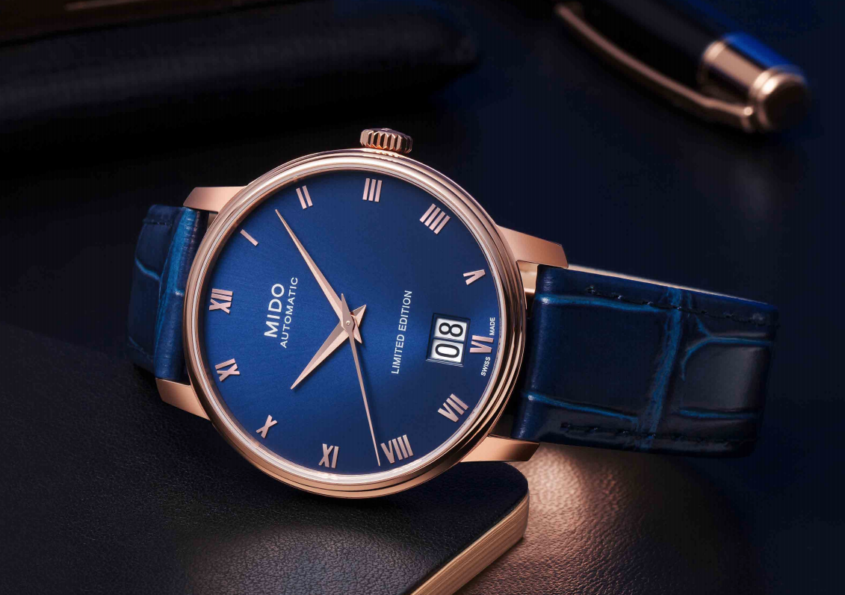 The unending pursuit by watch companies of the most commercially successful blue dial watch with integrated steel bracelet has left a lot of empty space for other expressions of a blue dial wristwatch. With their latest expression of the Big Date, Mido have grasped this empty space with both hands, producing a watch that has a deep blue dial, but is encased in a rose gold tone case, and strapped to the wrist with a matching midnight blue leather strap. It isn’t a watch that has already been done to death, and to add to the refreshing take, the aptly named Mido Baroncelli Big Date Limited Edition offers a date display that is far more balanced than we are used to seeing on a dress watch. Starting with the dial, the starburst blue dial is brushed to radiate from the large (and ever so slightly stepped) date aperture, rather than the typical and more symmetrical point where the hands are mounted. What it loses in horizontal symmetry, it gains in the way it draws the eye towards the date window and emphasises the lateral symmetry that is lost whenever the date window is placed at 3 o’clock on the dial.…
The unending pursuit by watch companies of the most commercially successful blue dial watch with integrated steel bracelet has left a lot of empty space for other expressions of a blue dial wristwatch. With their latest expression of the Big Date, Mido have grasped this empty space with both hands, producing a watch that has a deep blue dial, but is encased in a rose gold tone case, and strapped to the wrist with a matching midnight blue leather strap. It isn’t a watch that has already been done to death, and to add to the refreshing take, the aptly named Mido Baroncelli Big Date Limited Edition offers a date display that is far more balanced than we are used to seeing on a dress watch. Starting with the dial, the starburst blue dial is brushed to radiate from the large (and ever so slightly stepped) date aperture, rather than the typical and more symmetrical point where the hands are mounted. What it loses in horizontal symmetry, it gains in the way it draws the eye towards the date window and emphasises the lateral symmetry that is lost whenever the date window is placed at 3 o’clock on the dial.…
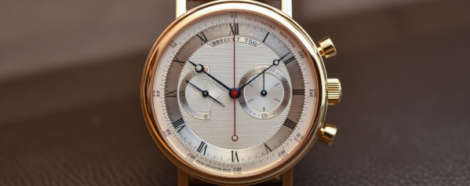
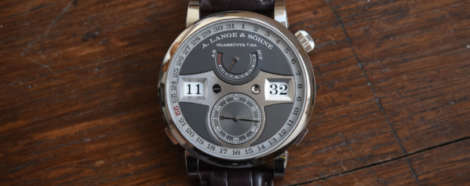
 When we see something repeatedly, over time, our brains quickly form habits that enable us to infer what we are seeing, bypassing the need to analyse every bit of information. That’s why we can make perfect sense of a paragraph made up of words that are missing their vowels, and why we can read the time on an analogue watch display that has no hour or minute markers. It’s also what makes Franck Muller’s Crazy Hours watch one of the most delightful pieces in contemporary watchmaking. In the first instant the dial appears perfectly normal, with a series of numerals arranged around its circumference. Half a second later, we realise that it’s anything but normal: the usual position of the numerals is completely jumbled. It’s a visual teaser – sense and nonsense – and a brain teaser, playing with how we habitually read time in a natural, clockwise sequence. Since Franck Muller invented the Crazy Hours complication in 2003 it has (unsurprisingly) become an emblem of the brand that bears his name – just as emblematic as the Cintrée Curvex case that houses these colourful limited-edition models. There can be few objects of any kind that combine grown-up glamour and…
When we see something repeatedly, over time, our brains quickly form habits that enable us to infer what we are seeing, bypassing the need to analyse every bit of information. That’s why we can make perfect sense of a paragraph made up of words that are missing their vowels, and why we can read the time on an analogue watch display that has no hour or minute markers. It’s also what makes Franck Muller’s Crazy Hours watch one of the most delightful pieces in contemporary watchmaking. In the first instant the dial appears perfectly normal, with a series of numerals arranged around its circumference. Half a second later, we realise that it’s anything but normal: the usual position of the numerals is completely jumbled. It’s a visual teaser – sense and nonsense – and a brain teaser, playing with how we habitually read time in a natural, clockwise sequence. Since Franck Muller invented the Crazy Hours complication in 2003 it has (unsurprisingly) become an emblem of the brand that bears his name – just as emblematic as the Cintrée Curvex case that houses these colourful limited-edition models. There can be few objects of any kind that combine grown-up glamour and…